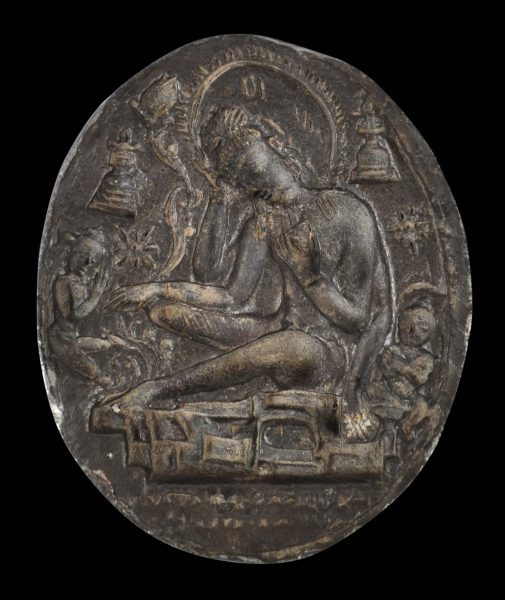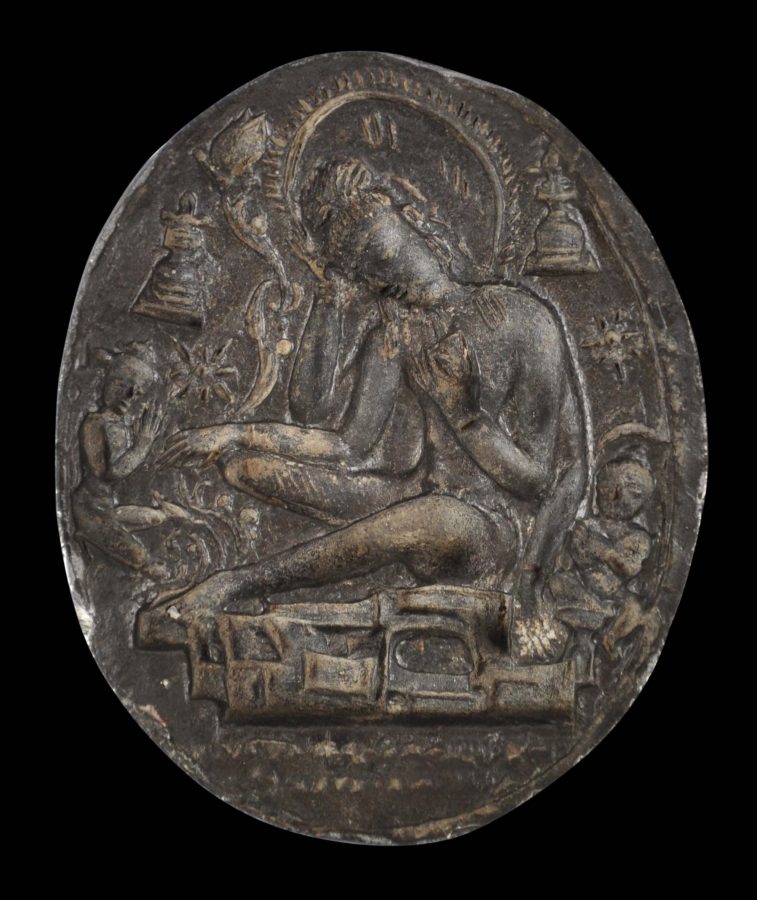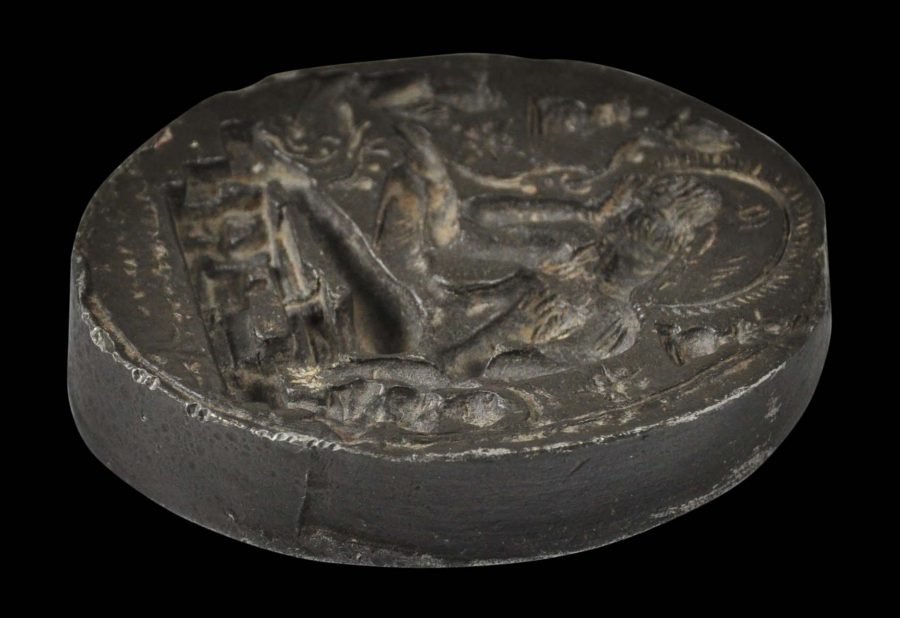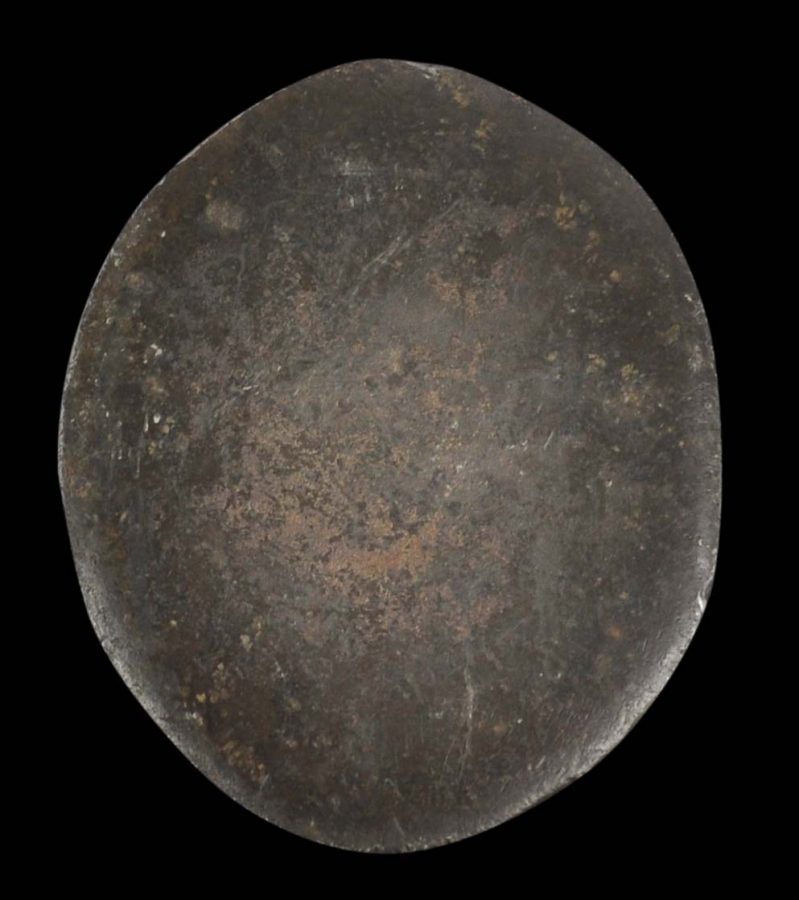Metal casts for making votive clay molds at religious sites in Indonesia are relatively rare. They are more typically associated with Tibet and Mongolia. Islam spread through almost all of Indonesia from the 13th century and by the 16th century, the archipelago had largely converted, so the use of such molds had largely ceased by this period.
This example of heavy cast metal, shows a relatively complex scene of a seated deity (possibly Chunda) with a flaming halo, two attendants and two stupas. The lower section also has two lines of (now illegible) script – probably sanskrit.
Relatively few such molds from Indonesia are known or have been published. One example, ascribed to 9th century Central Java, is illustrated in Lunsingh Scheurleer & Klokke (1988, p. 115).
Such molds were used as temples and other religious sites to produce inexpensively clay plaques showing images of deities. Both Hindus and Buddhists regarded the act of commissioning such a plaque to be meritorious.
The example here is in excellent condition. It is heavy for its size – weighing slightly more than half a kilogram. Chemical analysis of the metal shows it to comprise 94% tin and 6% lead and other metals. The use of tin is consistent with an Indonesian provenance – there were abundant natural sources of tin in Sumatra and the nearby Malay Peninsula. The mold is a rare, museum-quality item.
References
Fontein, J., et al, The Sculpture of Indonesia, National Gallery of Art, Washington, 1990.
Lerner, M. & S. Kossak, The Lotus Transcendent: Indian and Southeast Asian Art from the Samuel Eilenberg Collection, The Metropolitan Museum of Art, New York, 1991.
Lunsingh Scheurleer, P., & M.J. Klokke, Ancient Indonesian Bronzes: A Catalogue of the Exhibition in the Rijksmuseum Amsterdam with a General Introduction, E.J. Brill, 1988.





